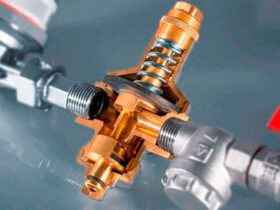Almost everyone came across sudden shutdowns of energy that interferes with working and resting. A civilized person is too much dependent on electrical systems and devices, without which he simply is not able to do.
An effective solution to such problems was the diesel generators of foreign and domestic production, which quickly pay off due to the economical consumption of fuel. The use of reserve power plants with automatic launch is very relevant for servicing country houses, recreation centers, construction sites, emergency services, hospitals, schools and other facilities.
Let’s talk about the varieties of automated DGU, which can be divided into three groups.
Group No. 1: DES of the first degree of automation
They provide:
protection of a diesel power plant from overloads and short circuits;
timely signal for the engine to launch the engine;
control of recharging batteries;
protection of the generator diesel engine from overheating, low oil pressure and increased revolutions;
Continuous work for 4-8 hours.
Conclusion: This version of DES 30 kW is ideal for reserve use. These stations are launched by the operator manually.
Group No. 2: DES second degree of automation
They provide:
emergency protection;
automatic (remote, remote control at launch;
automatic return transfer from the generator diesel to the main network and the unit is turned off;
stabilization of specified output electrical parameters;
work of emergency-preventive alarm;
Continuous operating mode for up to 16-24 hours.
Conclusion: systems of this type have established themselves at mining enterprises, remote construction sites, warehouse complexes, industrial enterprises, healthcare institutions and in the oil and gas industry.
Group No. 3: DES of the third degree of automation
They provide:
stabilization of the output parameters of the mains;
emergency protection and work of emergency-preventive alarm;
automatic (remote) launch of DSU when the network parameters are deviated from given standards;
Reverse of the load with the subsequent stop of the power plant;
Self -replenishment of the level of working fluids: cooling solutions, diesel fuel, oil;
emergency (emergency) stop;
automation of parallel operation of several generators;
control over the state of batteries;
automatic control and management of individual service processes and auxiliary equipment;
Continuous operating mode for up to 240 hours.
Conclusion: Such uninterrupted nutrition systems are in demand at high -tech production enterprises operating in continuous mode at large capacities.












Оставить коммент.